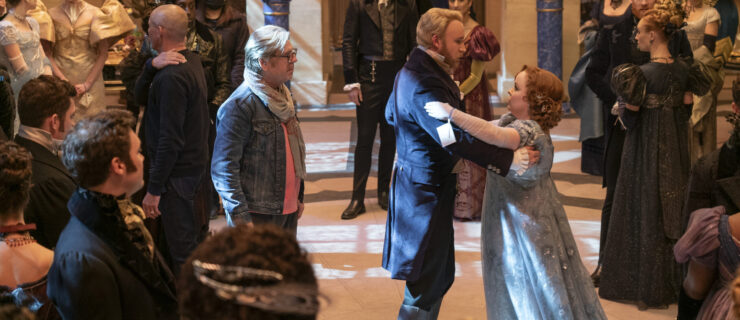Audition Mistakes You Don't Know You're Making
No matter how experienced you are, auditions are scary. And the pressure to be eye-catching in a room full of talent can push dancers to do things that actually make them less likely to get the job (or the scholarship, or the intensive spot). Don’t sabotage yourself! Here are some of the most common audition pitfalls.
1) Coming off as rude or arrogant.
While demonstrating your eagerness at an audition is good, be careful not to cross the line into pushiness. “There are some people who think that if they always shove to the front, they’ll be more likely to get the job,” says Glenn Edgerton, artistic director of Hubbard Street Dance Chicago. “I want dancers who are hungry, not aggressive.”
There’s also a fine line between confidence and arrogance. You may think that acting super-casual will show the directors you’re not nervous, but slouching, leaning on the barre and neglecting to mark combinations actually make you look complacent. If you get individual feedback or a correction at an audition, respond with enthusiasm. Marina Hotchkiss, director of the LINES/Dominican University BFA program, says a willingness to learn and grow is critical. “I look for open-minded dancers who relish what they do,” she says. “Character is vital.”
2) Being overly assertive with the director.
Yes, you want to make sure the people at the front of the room notice you. But that doesn’t mean you should be all up in their faces. “One of my pet peeves is people who dance on top of the judges’ table to get attention, which comes across as a little desperate,” says commercial choreographer Tricia Miranda. “Choreographers don’t enjoy it when you’re in their personal space.” And if you’re too close to the people evaluating you, they won’t actually be able to see your dancing. Back up and give them room to take it all in.
3) Changing the combinations or choreography.
At an audition, altering the given steps—unless you’re explicitly asked to—is a big no-no. You may think you’re customizing a routine so it shows you at your best, but doing so is disrespectful and demonstrates an unwillingness (or inability) to learn. Michael Vernon, chair of Indiana University’s ballet department, says doing combinations accurately is a good indicator of professional potential. “A dancer can stand out by executing the exercise exactly as shown,” he says—because that’s what choreographers will want them to do once they begin their professional lives.
4) Giving up when you mess up.
Directors want to see how you perform under pressure. If you make a mistake, your first instinct may be to stop dancing and try again with the next group. But that’s never a good idea—because it’s never an option onstage. Miranda recalls watching a dancer freeze up at the end of an audition: “She lost the choreography and went down in flames,” she remembers. “Don’t ever leave the floor. Freestyle until you can jump back in. I need to know if you mess up during a performance, you’ll be professional about it. Don’t cut yourself before we cut you!”
5) Dressing too sloppily—or too conservatively.
You may think that showing up to an audition in the type of warm-ups the pros wear makes you look sophisticated and casual. But it really just reads as sloppy. On the other hand, if you’re auditioning for a company, don’t dress like a student. Patricia Barker, artistic director of Grand Rapids Ballet, says she’s seen dancers wear their school’s dress code leotard to a professional audition, which makes them look immature. The happy medium? Barker recommends wearing something with clean, simple lines that still shows your personality—like a leotard in a super-bright color, or leggings with eye-catching mesh cutouts.
6) Over- or underdoing your audition packet.
Your audition packet is incredibly important—it’s how directors will remember you after audition day. But fancier isn’t always better. Your photos and videos should be pristine, with no distracting graphics. Print your resumé on a single sheet of white paper, so it’s easy to read. And don’t let a careless mistake—like forgetting to include your contact info—cost you a job. Edgerton has even received emails addressed to the director of another company. Proofread, proofread, proofread!



